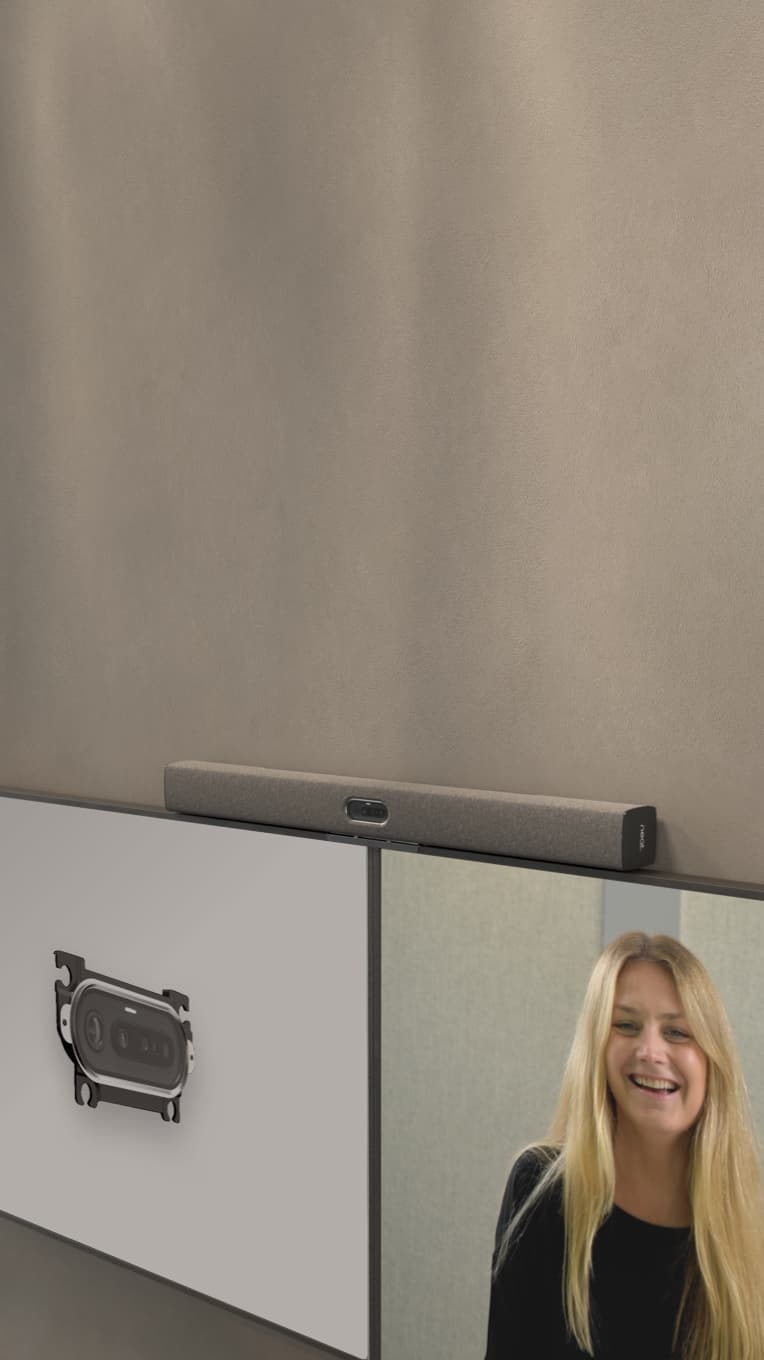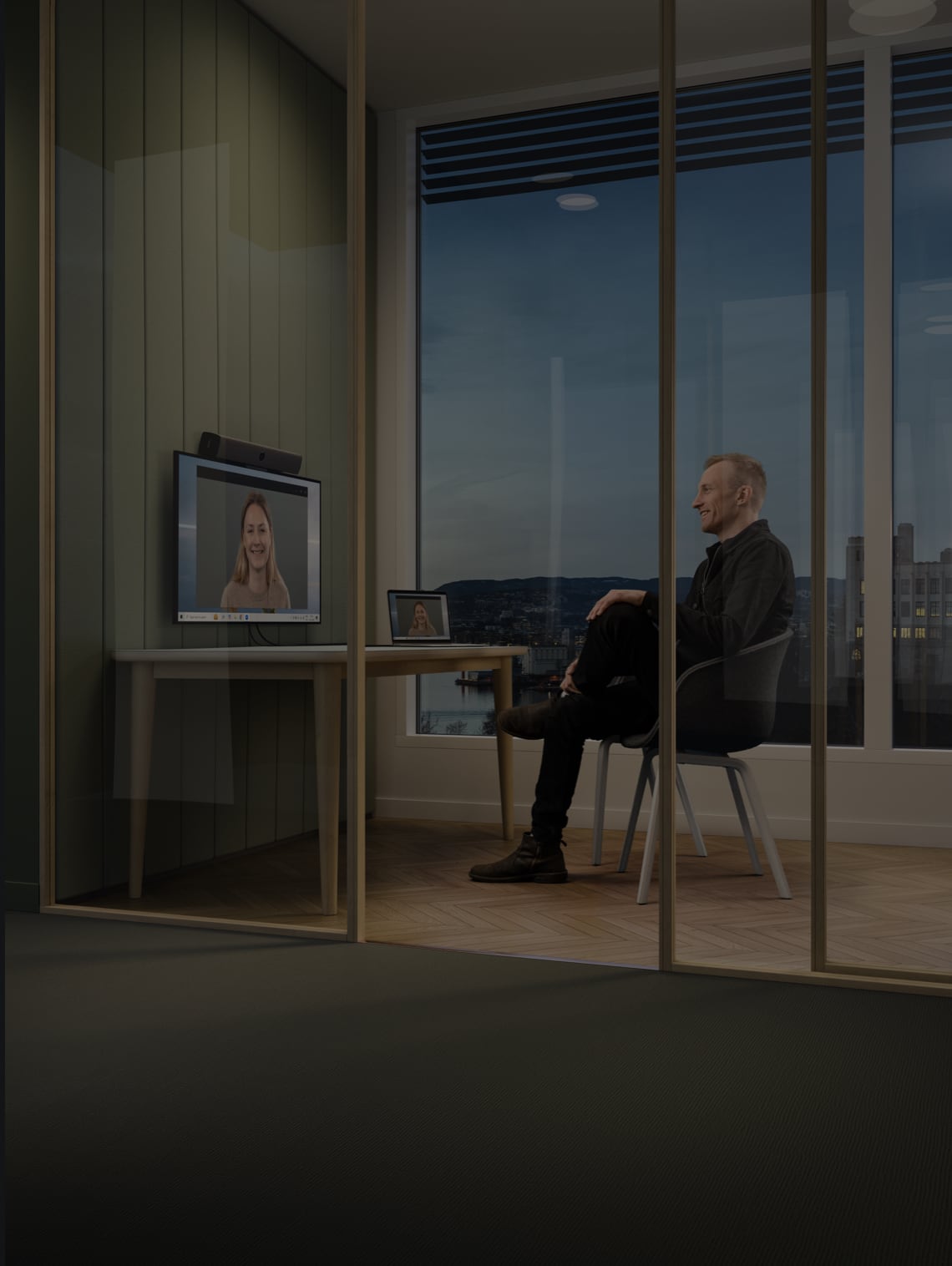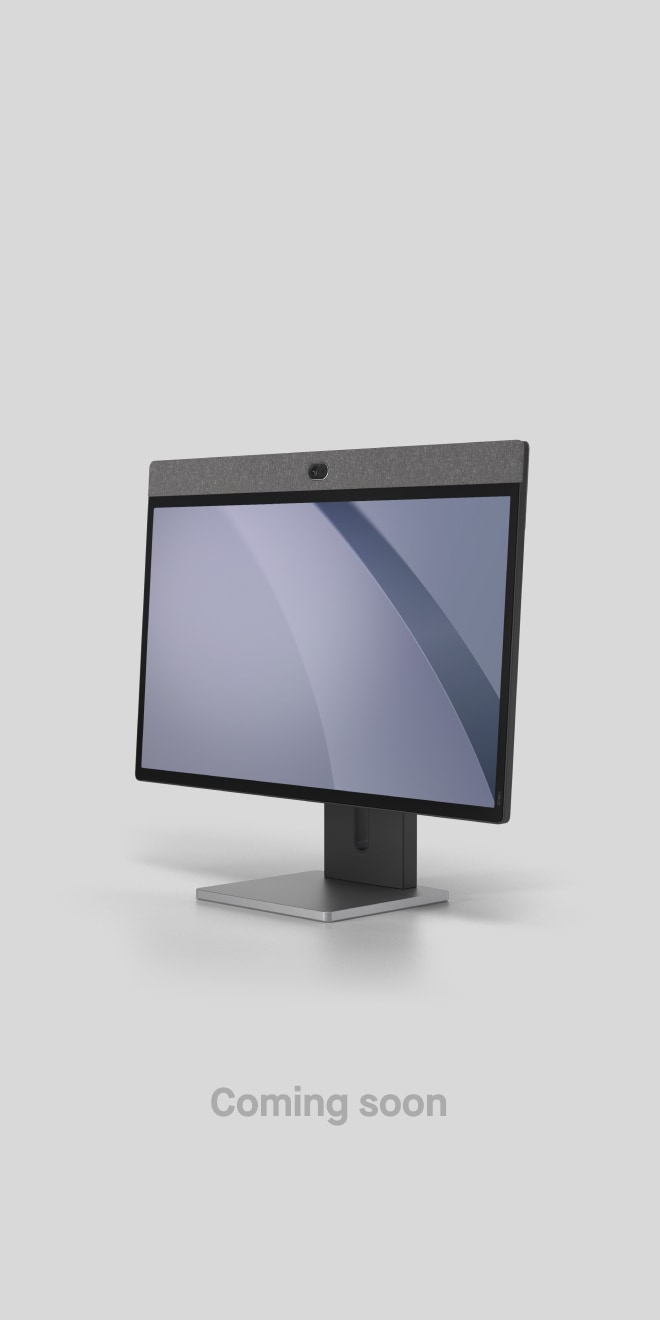How to Budget for the Best Video Conferencing Setup
Neat, Oct 25, 2023
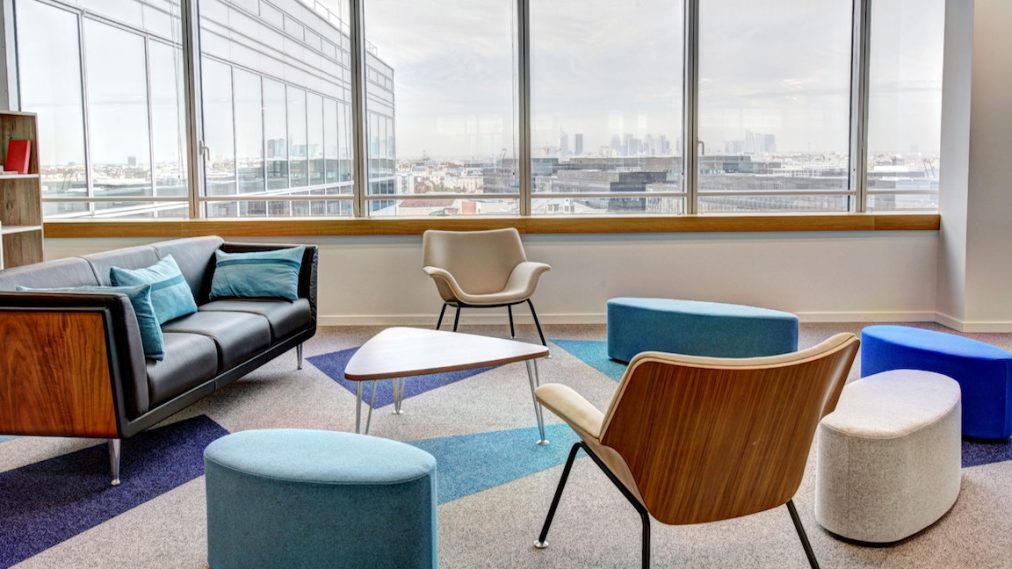
Whether you’re new to video conferencing or a seasoned pro, welcome to our comprehensive buyer’s guide to choosing and investing in the most suitable video equipment for your hybrid or remote teams.
While video conferencing is accessible for free, a more professional setup costs between $1,000 to $4,000 for simple solutions and $3,000 to $10,000 for larger-scale setups. However, equipment quality and meeting room size can affect your setup’s cost. Essential equipment includes a camera, microphone, speaker and screen, while further upgrades are available to enhance your video meeting experience.
Here’s the complete lowdown, including budgeting for your requirements, hidden costs and additional fees to consider, essential video conferencing equipment, choosing the right system, pricing models and a quick summary of why you should view Neat’s pioneering portfolio of video meeting devices.
Several factors influence the cost of a video conferencing setup:
- Equipment quality: High-definition cameras, professional microphones, and good-quality displays enhance the overall experience but can also raise costs.
- Software features: Advanced features like screen sharing, recording and other integrations may affect the price.
- Number of participants: Systems capable of accommodating more participants simultaneously typically come at a higher cost.
- Room size: Larger rooms may require more audio and video coverage equipment, contributing to higher costs.
- Huddle Space (<5 people): $1,000 – $4,000
- Small Room (5-10 people): $2,000 – $7,000
- Medium Room (10-20 people): $3,000 – $10,000
- Large Room (20-30+ people): $10,000 – $25,000+
- Integration: Additional costs may arise if the video conferencing setup needs to integrate with existing hardware or software systems.
- Installation and setup: Professional installation services can add to the initial cost but ensure proper functioning.
Hidden costs and additional fees to consider:
- Mobility and remote access: If remote participants need to join from various devices, ensuring compatibility might lead to added expenses.
- Training: Providing training to users on how to effectively use the system can result in extra costs.
- Licensing: Some video conferencing software may involve licensing fees based on the number of users or features.
- Bandwidth and data usage: High-quality video conferencing requires sufficient internet bandwidth, which may lead to increased data charges.
- Maintenance contracts: Ongoing maintenance contracts for technical support and updates may come with recurring costs.
- Room modifications: If the room needs optimal acoustics and lighting modifications, you must factor them in.
- Upgrades: Equipment or software upgrades may be necessary as technology evolves.
- Security measures: Implementing security measures to protect video conferencing sessions could involve additional costs.
- Additional features: Some advanced features or integrations may require purchasing add-ons or plugins.
To ensure an accurate cost estimate, consulting with vendors or professionals specializing in video conferencing setups is essential. Discuss your precise needs and get a detailed breakdown of all potential costs, including hidden fees or ongoing expenses.
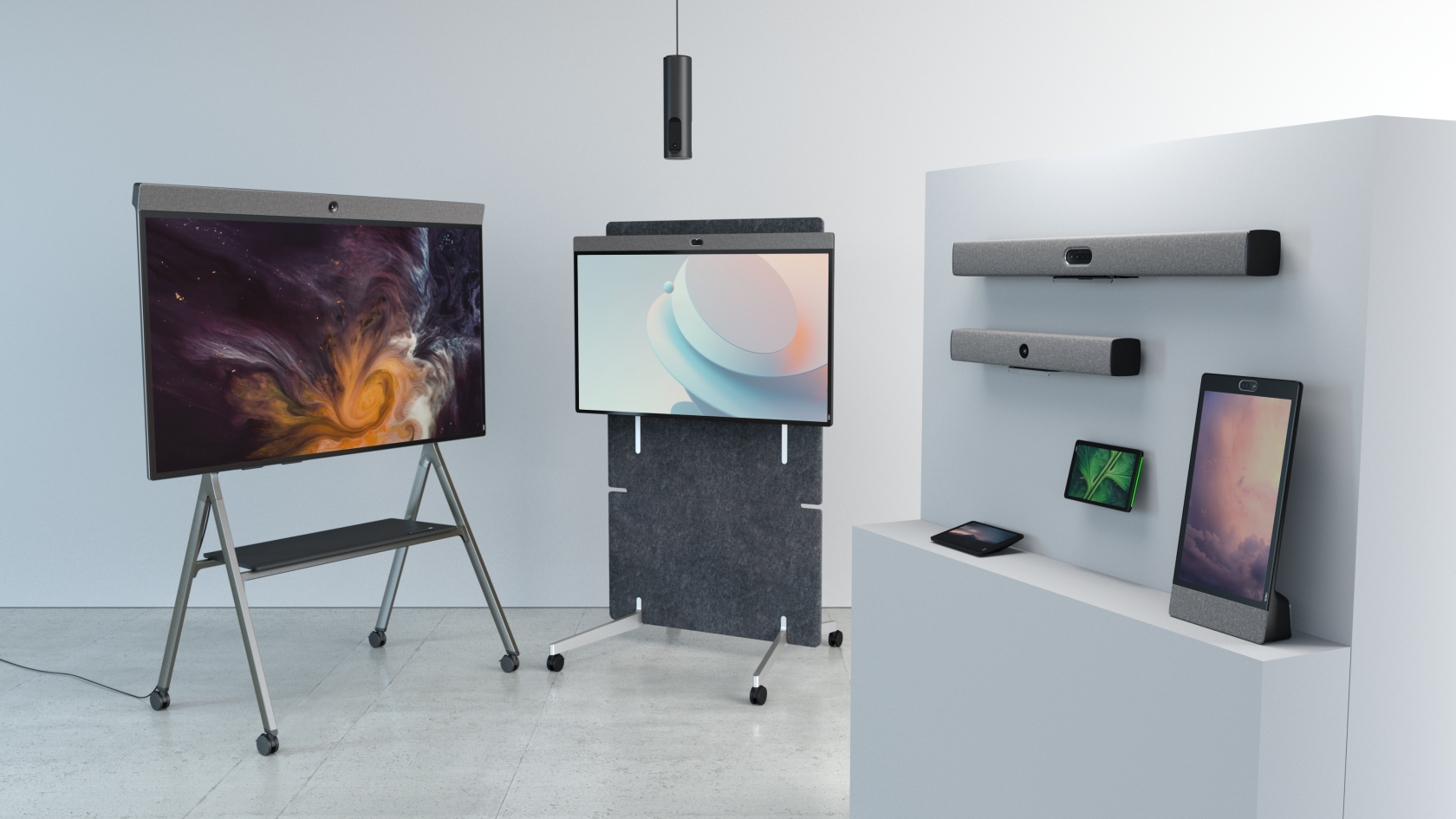
Essential video conferencing equipment
Essential video conferencing equipment for an office includes a high-quality camera (aka a webcam) to capture clear visuals. At the same time, a reliable microphone ensures high-quality audio. A display, such as a monitor or screen, is essential for showcasing remote participants and shared content, complemented by high-quality speakers for clear audio transmission. A computer or device equipped with your Zoom or Microsoft Teams video conferencing software license is necessary for joining and managing meetings, supported by a stable internet connection for seamless communication. Headphones or earphones can also aid in improving audio clarity.
All-in-one video conferencing devices that combine cameras, mics, speakers and a screen in one streamlined device are also available. The best ones do this without compromising video meeting quality or the user experience. For example, devices like Neat Board or Neat Board 50 include all you need in a unified system.
Setting up the room with appropriate lighting to enhance video quality and furniture, along with the necessary cables and accessories, ensures participants are comfortably visible and audible. Finally, remote control can simplify adjustments during conferences. At the same time, optional additions like touchscreens, meeting schedulers and devices with whiteboard capabilities complete the essential setup tailored to the office’s communication needs and meeting requirements.
Did you know that Neat Pad, for example, is a simple yet elegant touchscreen device to control your meetings or display room availability outside the room?
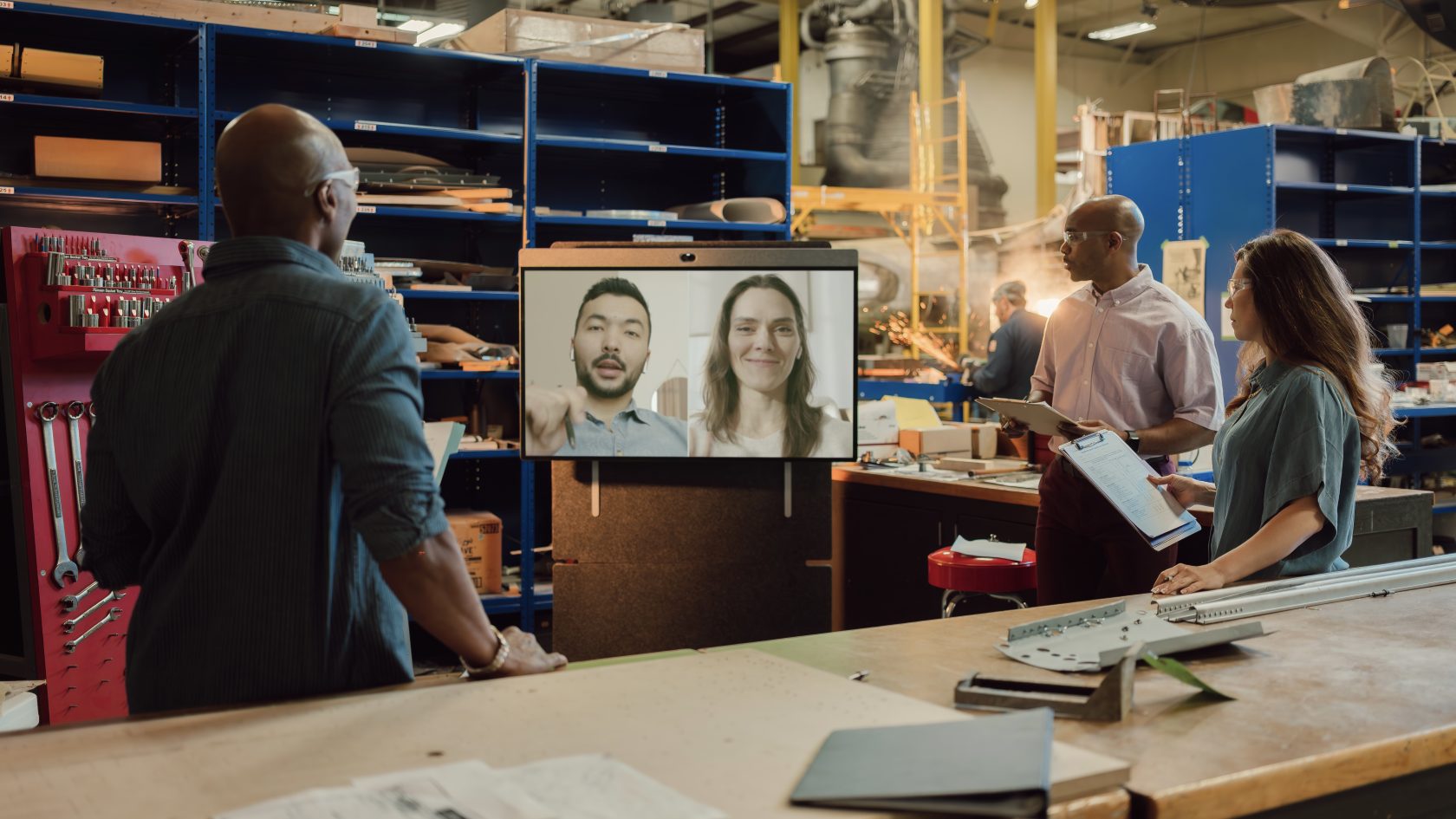
Neat devices cater to spaces of all descriptions and bring your remote teammates into the room as if they were there, enabling you to enjoy a closer, more natural collaboration experience.
Choosing the right video conferencing system
Selecting the right video conferencing system involves a systematic approach. To help you make the right decision for your wants and needs, you must consider the following:
Define your wants and needs
Clearly outline your requirements, paying attention to participant numbers, meeting room size, frequency of meetings, and any features you want from your video system, such as whiteboarding, integrated file sharing or messaging. You should also have a system that offers reliable mobile access via apps or mobile browsers to accommodate remote work.
Consider scalability, too. Choose a system that can grow with your organization, accommodating more participants and evolving features.
Define your limitations
Also, get clear on any parameters impacting your decision, typically your integration needs. Check if the system aligns with your organization’s other tools, such as your Zoom or Microsoft Teams video meeting platform, your productivity or collaboration platform (e.g., Slack), and other favorite tools you use. Furthermore, ensure seamless integration with your existing hardware for a smooth experience, considering the laptops, desktop computers, mobile devices, and other devices you’ve already invested in.
Prioritize quality and user experience
To avoid glitches and delays that poorly impact productivity and user satisfaction, always prioritize systems offering high-quality audio and clear video to ensure effective communication. Choosing a user-friendly solution is also essential to avoid frustration and frequent calls to IT support. Opt for an intuitive interface that simplifies usage for hosts and participants alike. Neat devices are simple and intuitive, without any specialized training required!
Security and support
Companies today must protect confidential data at all costs. Look for security measures such as encryption and authentication to safeguard conversations and data. It’s also important to check that any system you choose has ongoing support from the manufacturer. Determine your customer support before purchase and whether the vendor includes it within or outside the upfront cost.
Trials and customer reviews
As with any purchase, it’s always wise to take advantage of product demos and trial offers to assess features, performance, and user satisfaction before committing. You’d also be wise to research independent reviews, like user reviews and awards.
Did you know there are Gartner peer insights on our award-winning Neat devices to help you make the most informed choice?
Avoid obsolescence
Finally, future-proof your investment by choosing a system that can evolve with technology trends to avoid obsolescence. By methodically assessing these factors, you’ll make an informed choice that supports efficient communication, collaboration, and user satisfaction.
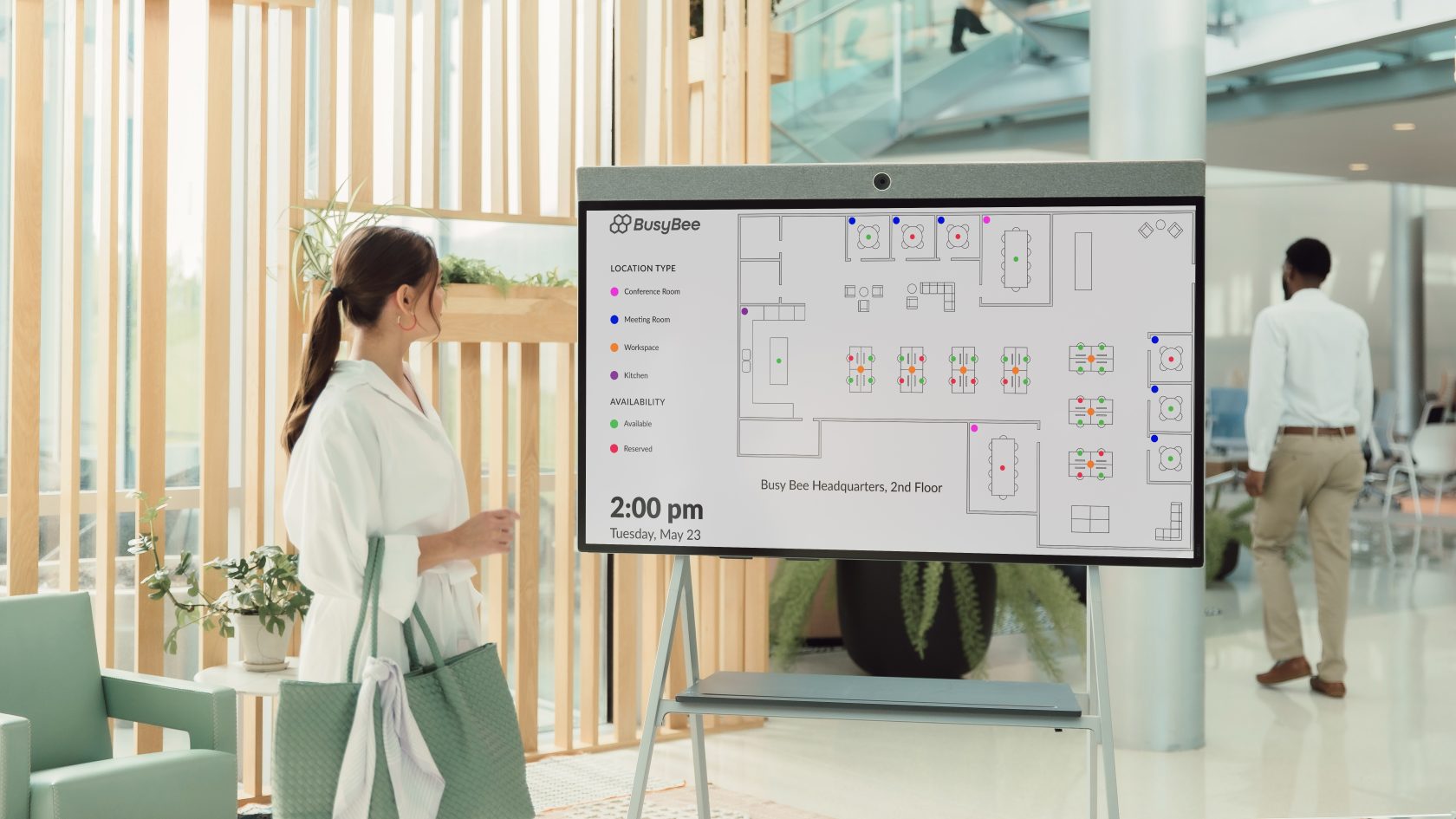
Pricing models for video conferencing systems
When evaluating pricing models, consider your organization’s budget, the frequency of conferencing and long-term plans. Subscription-based pricing ensures ongoing access to the latest features but involves continuous costs. One-time payment pricing offers ownership, yet you should consider potential update fees. Pay-as-you-go pricing provides flexibility for dynamic usage but can result in higher costs over time if your use is consistently high. Make a choice based on your needs, financial considerations and preferences for ongoing support and updates.
Subscription-based pricing
This model involves recurring payments for continuous access to the video conferencing system’s features, regular updates and customer support. It offers the advantage of predictable costs and the flexibility to adapt plans according to changing needs.
One-time payment pricing
With this approach, users make a single upfront payment to purchase the video conferencing system, typically including a license for a specific version. While it provides ownership and control, additional fees might apply for future updates or support beyond a particular period.
Pay-as-you-go pricing
A pay-as-you-go pricing model charges users based on their actual usage, such as the number of meetings or participants. It suits organizations with varying conferencing needs, allowing them to pay for what they use without committing to fixed recurring costs.
Did you know you can purchase Neat devices with a one-time payment or pay a monthly or yearly subscription?

Many companies are choosing Neat devices
Many companies with hybrid workforces are choosing our innovative portfolio of pioneering video devices because we’ve designed them with in-office and remote employees top of mind. Besides Neat devices having superior audio-visuals, all are seriously simple and intuitive to use without needing specialist training. We also work directly with Zoom and Microsoft Teams to deliver a truly native experience that’s continually updated to take advantage of the latest features these powerful platforms have to offer. Other Neat benefits include BYOD support and 3rd party app support.
Here’s a selection of popular Neat devices:
Neat Bar
Neat Bar Neat Bar is a simple, compact, elegant meeting room device that delivers superior-quality audio and video. It works brilliantly for meeting, huddle or focus spaces for up to ten people with one or two monitors and pairs with Neat Pad, our dynamic touchscreen device for starting and controlling your Microsoft Teams or Zoom meetings.
Neat Bar Pro
Neat Bar Pro drives up to three large monitors to give you the ultimate immersive meeting experience by allowing you to simultaneously see people and content more easily. It incorporates two extreme resolution cameras and an advanced image depth sensor that combined deliver 16x zoom. Neat Bar Pro is perfect for any small, medium or large room and comes with Neat Pad.
Neat Board
Neat Board is the complete meeting room package in a simple, elegant, all-in-one device. Comprising a 65” multi-touch screen, a powerful audio system and a versatile wide-angle camera, Neat Board gives you a collaboration experience beyond video meetings and wireless content sharing by enabling annotations and whiteboarding. Neat Board works great for ad-hoc social interactions throughout open social spaces.
Neat Frame
Neat Frame is a unique portrait-oriented touch-screen device ideal for your home office, company’s huddle spaces, or hotdesking areas. Its superb eye-level camera gives you a more focused, naturally engaging, inclusive meeting experience. At the same time, the device frees up your laptop for other tasks, ensuring you stay completely attentive and engaged.
Want to know more about how Neat can support your hybrid workforce?
We’d love to hear from you, so why not contact one of our product specialists today at hello@neat.no or take the plunge and book a demo?
Sources
What is the Cost of a Video Conferencing System? Usherwood
How much does a video conferencing system cost? TVS Pro
Video Conferencing Setup Requirements: Your Checklist for Hardware and Software. Lifesize



